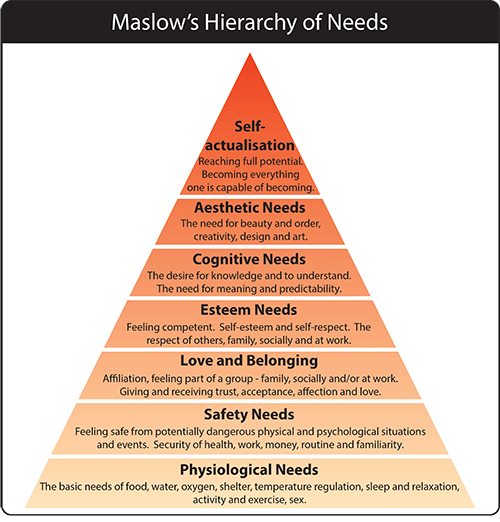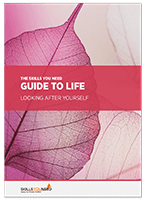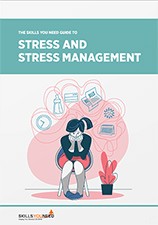Work-Life Balance
See also: Avoiding BurnoutWork-life balance is a term used for the idea that you need time for both work and other aspects of life, whether those are family-related or personal interests. The saying goes that ‘all work and no play makes Jack a dull boy’.
But work, or at least some kind of contributory effort, whether paid or voluntary, is often recognised as being important for personal satisfaction, so it seems likely that ‘all play’ would be dull too.
The Origin of the Idea of ‘Work-Life Balance’
The idea that rest is vital for productive work goes back millennia.
And on the seventh day God ended his work which he had made; and he rested on the seventh day from all his work which he had made.
Genesis 2:2, King James Bible
In the 1800s, during and following the industrial revolution, industrialists and unions alike agreed that workers needed a day off. This later became a two-day ‘weekend’. But in those days, ‘work’ was mostly manual, and once workers left the site, they also left their work behind. They were genuinely able to rest, away from work, without having to think about it or worry about what might be going on in their absence.
Times have changed dramatically.
The phrase ‘work-life balance’ is rather more recent in origin. It was probably first used in the UK in the late 1970s, and in the US in the mid-1980s. It has, however, taken on a new meaning with the recent technological changes that have made it possible for workers to stay in touch 24 hours a day, seven days a week. Smart phones, remote working technology and the like have meant that, even on holiday, people find it hard to ‘switch off’ and genuinely rest, and the complaint is often that people are expected to be ‘on-call’ at all times, without being allowed to have a life outside work.
The Importance of Work-Life Balance
Our page on Personal Development explains the work of Maslow, and his Hierarchy of Needs.
Broadly, Maslow says that people have needs, which had to be met in order. Before anything else can be considered, basic physiological needs such as food, water, and shelter must be provided. After that, people need to feel safe, and then to be loved and belong to a group.
They then move on to issues of self-esteem, cognitive needs, and aesthetic needs, and finally, at the top of the pyramid, there is self-actualisation, or achieving your full potential as a human being.
What this means in practice is that work provides for basic needs: money earned provides food, and shelter, and a regular income means safety. Work also allows people to belong to a group, and doing well at work boosts self-esteem. The lower levels are all largely met through aspects of working.

At the top of the pyramid, however, are needs which are hard to meet with work alone, and this is where lifestyle choices, and having time for leisure, become important.
This explains partly why a work-life balance is a relatively modern concept, because you truly do need all the basic needs to be met before you have time or energy, or need, to worry about aesthetics or self-actualisation.
Stress and Rest
As our page on Stress explains, while some level of stress can be very productive, prolonged and high levels of stress can lead to mental health problems, including burnout and depression. These are not just personal problems: time off work for mental health problems is extremely expensive for businesses.
It is well-documented that rest and, particularly, being able to detach from work is vital for reducing stress.
With almost half of people reporting that their jobs are either ‘very’ or ‘extremely’ stressful in a survey in the US, this means that the idea of a work-life balance is increasingly important to the economy.
The ‘Ideal’ Work–Life Balance
Is there a way to define the ideal work–life balance?
The answer is yes and no. No, because there is no single ideal that works for all of us, or all the time for any individual. It is a highly personal thing. However, we all have the capacity to decide for ourselves what our ideal work–life balance would look like at any given time.
To get a feel for whether your work–life balance is about right, try asking yourself two questions:
- How would I describe my life just now?
- How would I like to describe my life just now?
Whether the answers to these two match will tell you a lot about how you feel about your life at the moment—and how far it is from the ideal.
Achieving a Work-Life Balance: A Suggested Process
Achieving a work-life balance can be a challenge, but these ideas should help you to make a start:
1. What is the nature and scale of the problem?
Before you can make things better, you have to understand the problem.
Try keeping a diary for a week, and set out how much time you spend on each activity, both at work and outside. That will give you an idea of your current work-life balance. You may also find it helpful to separate chores, including driving children to activities, and ‘fun’.
Warning! You may be surprised by the results.
A recent study using this technique found that women who reported having a good work-life balance and those who felt that they were spending too much time at work actually had very similar diaries. Much of it was a matter of perception.
Just seeing how much leisure time they had often made the participants feel better immediately.
Once you can see how your life separates into work and ‘other’, and into chores and fun, you can start to work out how to make changes to improve the balance.
2. Identify the ideal scenario
In many ways, this process is a bit like strategic thinking.
First you need to know where you are, then where you want to be. Think about how you would like your life to look.
- What would be the ideal balance between work and home?
- How would you like to be spending your time?
Top tip: Clocks
One very useful technique for this is ‘clocks'.
Draw two clock faces on a page, one for an ideal week day and one for an ideal day at the weekend.
Split the day up into chunks to show how you would like to spend it: how much time in bed, how much time doing chores and other necessary but boring things, how much time working, and how much time on other things.
Be specific about the other things, whether those are playing with the kids, practising a musical instrument, learning a language or going for a walk. The discipline of having a clock face forces you to fit your activities into the time available, and you can see whether your ambitions are realistic.
You can expand this to seven clock faces, one for each day of the week, if you wish.
WARNING! Be realistic about your ambitions. You do need to do boring stuff like cleaning and laundry from time to time, or pay someone else to do it.
3. What changes do you need to make to get from ‘now’ to ‘future’?
Look at your current situation and at your ideal scenario.
Identify three to five key changes that will help you to move from ‘now’ to ‘future’. For example, if you have identified that you want to confine weekend overtime to an hour in the evening on Sunday night, then what do you need to do to achieve that?
Concrete steps that you could take include:
Telling your colleagues that you will not be checking emails at the weekend;
Putting an out-of-office notification on your email to remind people;
Putting your work phone and computer away somewhere during the weekend. If your work emails come to your personal smartphone, then remove the account, or get a dedicated phone for work; and
Telling your family what you intend so that if they catch you checking emails they can remind you.
If you have enough time outside work, but you feel that it’s all swallowed by chores, then steps to take might include:
Working out whether you can afford to have a cleaner;
Asking your spouse, and if appropriate, children, to do more chores, and agreeing a reasonable split or rota; and
Identifying one day per week which is ‘chore-free’.
A Matter of Choice
It is important to recognise that we all make choices that affect our work–life balance, and particularly, how much free time we have.
You might feel that some of those choices are forced upon you by work or family circumstances. However, ultimately, it is up to you to take control of your own life. Nobody else is going to do that for you.
It is no good complaining that you have a poor work–life balance, and then doing nothing about it.
Stop and take a look at some of the choices you are making or have made, and how they might be affecting your approach to work and life. Consider whether you can make different choices, and achieve a different outcome.
Some good ways to take back a little control over your life and make yourself feel better include:
-
Getting enough sleep (and there is more about this in our page on The Importance of Sleep);
-
Taking some exercise, even if it’s only a short walk (and you can find out more in our page on The Importance of Exercise);
-
Turning off notifications, which will help you to avoid the ‘always on’ feeling (there is more about this in our page on Problematic Smartphone Use); and
Asking for help or support, even if it’s only asking a friend to go for coffee with you so you get a break from work, or can vent to them.
Our pages on Assertiveness explain that you need to value yourself as highly as others: not ahead, but not behind, either. Taking time for yourself and taking more control over your life, without feeling bad about doing so, are important aspects of that.
Remember…
…it is possible to achieve a reasonable work-life balance, but you have to want to do it.
You can take control of your life, and make time for the things that matter to you, but nobody else is going to do that for you. If you want to spend more time out of work, then you will have to start leaving work earlier or arriving later.
You may need to learn to be more assertive with your colleagues, and particularly start to say ‘no’, if anyone asks you to take on more (and see our page on Assertiveness Techniques for some helpful tips). But once you start looking to make changes, you may be surprised how easy it is to achieve a better work-life balance.
Further Reading from Skills You Need
The SkillsYouNeed Guide to Stress and Stress Management
Understand and Manage Stress in Your Life
Learn more about the nature of stress and how you can effectively cope with stress at work, at home and in life generally. The Skills You Need Guide to Stress and Stress Management eBook covers all you need to know to help you through those stressful times and become more resilient.
Continue to:
Time Management
How to Delegate


